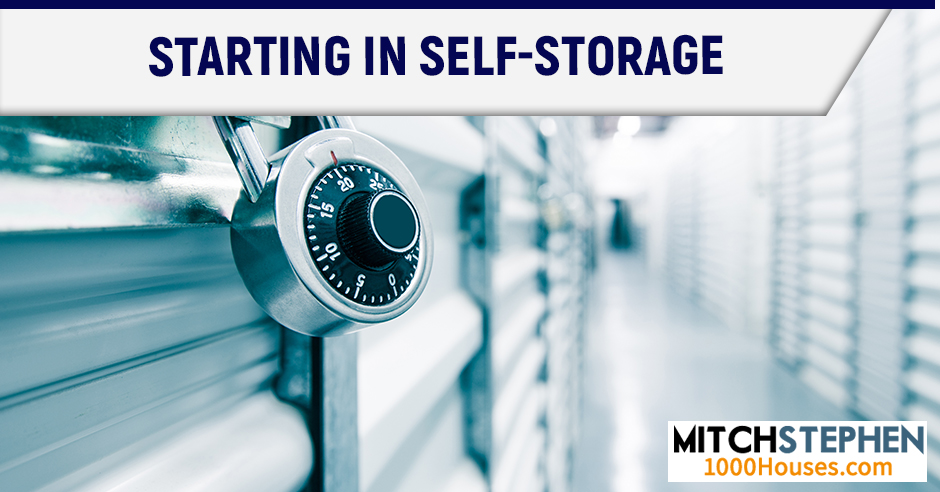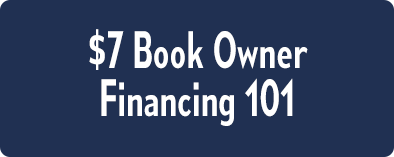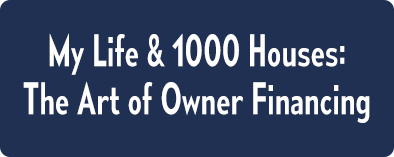PODCAST
Starting In Self-Storage
Episode 460: Starting In Self-Storage

It may not be the first option for real estate investors, but self-storage is definitely an appealing asset. Some of its pros include low overhead, large revenue potential, and low construction and building costs. But how does one get started in the self-storage business? In this episode, join Mitch Stephen and his guest, Stacy Rossetti, as they talk about the main keys to get started in the industry. Stacy is a self-storage investor and teacher at the Super Secret Investors Society. She owns and operates REI USA and StorageNerds.
—
I’m here with Stacy Rossetti, and we’ll be talking about how you can get started in the self-storage business. I’d like to pay homage to my sponsor, LiveComm.com. If you don’t have a lead generation system dealing with mass texting and incoming call capture, you need to check out LiveComm.com. They do a great job. Go to LiveComm.com and check out the homepage and find out why and how I’m using LiveComm to have my houses on the market for only nine days average over the last 300 houses. Stacy, we’ve paid the bills and it’s time to talk about storages. How are you doing?
I’m doing great. Thank you for letting me come and hang out with you.
I’m glad to have you here. You’re from Austin, Texas, which is a hop, skip, and jump from where I’m at. We’re about 70 miles apart, probably. You sound like you started out a lot like I did, buying up a bunch of little bitty mom-and-pop places or something you could afford, progressed into some little bit bigger places, who knows what the future holds. I started out with fifteen units, little boat stalls in front of Commonwealth Park. I had an eighteen-unit place and then I had a 54-unit place next. I kept going. I built a $2.8 million, 383-unit first-class, ground-level facility space on a major highway. Every single one of those steps takes a little bit more knowledge and a little more guts and a lot more money. You work your way into it. How about you give us a little background on yourself in how you got into the storage business.
I grew up in Pflugerville. Everybody knows Pflugerville. Back when Pflugerville was 3,000 people, that’s when I was there. My family still lives in Austin. We’re there quite often. We’re thinking about moving back. You never know, we might be able to hang out and have a coffee one day. Right now, I live in the North Georgia Mountains and we own storage facilities all across Georgia. That’s where we buy it. That’s our hotspot. I was one of those crazy people that started out rehabbing. Several years ago, I got into rehabbing. I was one of those that’s willing to do fifteen rehabs at a time.
What happened is I got pregnant. Once I got pregnant, this mom-to-be, I started freaking out a little bit. I was like, “How am I going to manage these fifteen houses?” We had fifteen rehabs we were working on at the time, and then we had fifteen rehabs in the pipeline. In my mind, I was thinking to myself, “How am I going to manage all these rehabs and have this little, tiny baby?” At that time, we had only been in the business for about five years, and I had not thought about passive income at all. I had a couple of rental properties that we had picked up along the way, but I hadn’t ever focused on passive income. Me as this mother, I was like, “We need to start focusing on passive income.”

Self Storage: Educate yourself. In the self-storage investing world, there’s not a lot of people out there that teach this stuff.
I told my husband like, “We are not buying houses anymore. We’re not buying rehabs. I don’t have time for that. I want to be at home and stay home with my daughter.” What happened is that I have a realtor that I’ve been working with for ten years, with the same girls we are working with the whole time. I told them, I was like, “We’re not buying houses anymore. I want passive income. Get out there and start looking for some passive income.” He started sending me multifamily, and this is back when nobody wanted to buy a multifamily. Remember those days, back in 2014, it would be like, “Multifamily, that’s crazy.” We were looking at multifamily that wanted rehabs. We were looking at buying portfolios of houses because essentially, I’m 100% privately funded like you.
All I had to do was, essentially once I finished a rehab up, roll that money over into whatever I wanted to buy. I had to convince my private lenders like, “Can we start looking at something else to do?” I got pregnant and we started looking for passive income. Luckily my realtor, my very first storage facility that we ever bought, he found a storage facility that was twenty minutes from our house, which was awesome. I was like, “This is perfect.” I drove over to take a look at it. It was the dumpiest, ugliest, grossest storage facility that you could ever imagine. In fact, when we drove up to the gate, 100 or 200 tires were sitting right in flight to the left of the gate. People had used it as a dumping ground and dumping tires everywhere.
I peeked into the fence, it’s on 3 acres. There’s a lot of parking, there’s a strip of storage units. Around that facility is all this parking. I looked in, and essentially you could tell the guy was like, “Go find a spot.” There were RVs, boats, big rigs, dump trucks and tow trucks. Wherever they found a spot, that was their spot. There was no rhyme or reason to what he was doing at all. I looked at that place. As a rehabber at heart and somebody that loves nasty, dumpy places, I was like, “This is perfect for me. This is a good deal.” I could tell by looking at it that the way that he was running it, he was essentially running it to the ground. That property had been on the market for five years and nobody had bought it. I knew, I was like, “This is a good opportunity.” I didn’t know anything about self-storage investing at all, nothing, but I knew by looking at it visually that it was going to be a good deal if I can get it at the price that I wanted it at. That’s how it got started.
Do you remember the numbers on that first deal?
Yes. He had it on the market for $500,000. It’s 64 10X10s, one long strip. What we did is we met him. It was Big John’s Storage. We went out there, we met him and walked the property. As we were walking the property, essentially in my mind, I was visually counting how many lanes of parking we could create. The way that he was doing it, he had cars everywhere. We counted around and as I walked, I was like, “This is probably a least 50 units, at least 50 lanes of parking, and then 64 10X10s.” I asked him, “How much are you making per month?” He said, “I’m probably making around $2,000, maybe $2,300 a month.”
For me personally, even if you’re charging 50 units at $50 each, that’s already $2,500, not including the units, which he told me he was charging $35 for a 10X10. I calculated essentially, if there are 64 10X10s by $35 each, then that’s at least $2,000 for that, plus the parking. He should be making $5,000 if he was 90% full. He told me he was making $2,300. I knew that he was making half of at least what he was charging as is. That’s how I started out looking at it. I asked him, “Can I see your numbers? I want to start looking at your numbers.” We were in his office. He opened up his desk and pulled out a ledger. I’m sure you’ve seen this before.
He was keeping track of all of the payments he ever got in this ledger. I don’t know how he kept track of all that stuff, but he did. He would take checks and cash and that’s it, but mostly cash. Most of the time for that cash, he would pocket that money. He did not have any income to show at all. He had nothing to show. Essentially in my mind, what I was thinking was like, “This person has had this facility on the market for $500,000 for five years, nobody’s bought this thing and he has no income to prove so nobody could even go out and get a loan this thing.” Essentially in these types of properties, these are mismanaged properties, you need to have a private lender to lend you the money for this, or you need to have your own money for something like this.
To go and get funding for this from a bank is almost nearly impossible because in the commercial real estate world, it’s all income based. They all want to see how much money you’re making. “Can you prove this? We’ll give you a loan based on the income that you’re proving.” He had nothing to prove. What I told him is it was exactly that. I said, “You’ve had this thing on the market for five years. You’re trying to get $500,000 out of it. You can’t even prove that you’re making $2,300 a month. In that respect, I’m going to have to go out and get a private lender and pay double the interest rate of what I would get at a bank. Because of that, I have to offer you a low offer.” That was the premise of my offer. He wanted $500,000, I offered $200,000. Immediately he was like, “No, I’m not going to do it. I’m out.” He started freaking out a little bit. I said, “Think about it over the next couple of days and let me know, but essentially this is how it works. You’re going to have it sit on the market because you can’t prove that income.”
We need to start focusing on passive income. Share on XWhere did $2,300 a month constitute a $500,000 price anyways, even if he could prove it?
This is how sellers are, you know this. They pick this number in the air.
They pick their dream number like, “Maybe some dummy will come by and pay me.”
This is what he thought. That’s why it sat in the market for so long. This is back in the day when things would sit on the market and people are getting a little bit crazier with the numbers. People are happy with 6 and 7 caps. I have no idea about that. He called back a couple of days later and he said he’ll take $250,000. He said that’s the lowest he would go, but in my mind, I already knew it was going to be $250,000. I offered $200,000 to get him to do $250,000. We put it under contract for $250,000 and we bought the storage facility. We had no idea what we were doing. We’re just like, “Now we own a storage facility. What do we do?” That was the fun part.
For the readers here, in my humble experience, because I own 12 or 14 locations, depending on how you want to look at it because a couple of them are contiguous with each other. I have 1,300 doors and I started out much like you. In retrospect, the first thing I should have done once I got the storage was sign up with the local Texas Mini Storage Association so I could get the handbook and the contracts and I could know how to foreclose. I could know what my rights were and what late fees were. Was that how you would handle it now if that was your first place and you just got it? Is that your opinion of what you should do?
That’s exactly what I did. I joined the Georgia Self Storage Association. I got the contract. When you become a member of your association, usually they’re going to hand you the contract over, you can download it and use it. My husband, he did a tenant law class and how to do auctions. They provide this through your government to do these kinds of things, how to do auctions. We educated ourselves. The thing in the self-storage investing world, there are not a lot of people out there that teach this stuff. It’s such a small community that there’s not a lot of education except for your self-storage associations. If they’re good, they’ll teach you stuff like this. That’s what we did, we started figuring it out on our own. Luckily now, there are some easier ways to learn to do this, but back in the day there wasn’t a lot.
One of the dangers of what you did is if you don’t have the serial numbers, BIN numbers, the hull numbers of boats, the boat motor number and the trailer number, it gets difficult to foreclose on this stuff. I’ve gotten myself in corner sometimes where things needed to disappear. They were abandoned, no one gives a damn. I would tell some of these people, “You owe me $500. Come get it and go away.” They wouldn’t even come and get it. I want everyone to be careful about picking up facilities that have trashed buses because to do it right, it could get hairy.
You have to be educated. My husband, he did a whole bunch of auctions on vehicles. At least in the state of Georgia, you can learn how your state is. Every state probably is different but the same. Essentially in the state of Georgia, there are vehicle auctions, which is the same process, but a tow company would go through. They’re towing your vehicle, then you don’t pay it and it sits there forever, then they do their process. We learned how to do this process as well too. That’s on the vehicles. Vehicles are a little bit trickier than units. Units is considered storage tenant law. You learn how to do your auctions that way. No matter what, to get rid of any type of vehicle, personal property, abandoned vehicle or anything like this, you have to know the auction process within your state because you have to go through the auction process.
It gets even hairier with boats because you have to have a whole serial number, a motor serial number and a trailer number in my state. I want to point that out. There have been times when you couldn’t get ahold of anybody. Some of these things didn’t even have serial numbers. It was crazy. The other thing you want to be careful of, you’ll agree with me, it’s hard to do with people if you don’t have contracts for every single person in the unit. I see people buy rent houses that have a tenant in it. I say, “What’s the agreement with the tenant?” They didn’t have a lease. I said, “This could be a big problem because you already own the house now. You need to solve these problems ahead of time, make people sign leases before you close or else they might have you over a barrel. You have to be careful about that.” You bought it for $250,000. What did the turnaround look like?
For the first year, we were just trying to figure out what we were doing. Do not do this because this is not a good idea, but I told all the tenants like, “We’ll just grandfather, we’ll keep your price the same.” We decided to raise rates. I was honestly so scared about raising rates because I thought everybody was going to leave. It took us a year to raise rates. We gave 60 days’ notice and we raised the rates. I remember, for his 10X10s, he was charging $35. The competitors right up the street were charging $65. We went a whole year too scared to even raise the rates. This facility is in an industrial area so there are big rigs, tow trucks, dump trucks and box trucks. That’s what were parking at this facility.
We get to charge even more than that because we were charging $75 to $100 a month on each of those lanes. We have 60 lanes. We do, let’s say 60 lanes by $75 comes out to some $4,500 a month for the parking alone. For the parking is at least $4,000 a month on average. We’re full on that. The 64 units, we bumped that up to the $65 a month now. Now we have 60 units, that’s $60 a month, that’s $3,600. We’re making $4,000 plus the $3,600 on a monthly basis. That’s $7,600 a month. Our mortgage is all in to pay all of our bills and do everything is around $2,000 for that facility. We’re netting about $5,000, which is good. What that does is offsets some of the other properties that we buy because we always buy mismanaged facilities.
On that first year, we were coming out of pocket trying to get that thing cleaned up because the owner was full. He was like, “We’re full.” It was full of junk and nobody was paying. We do that a lot. We bought an abandoned facility and the owner was like, “It’s full.” He wasn’t making any money at all, but it was full of people, and he had, over the past years, walked away from everything. It took us a year to even get that all cleaned out and full. It takes time because it’s a lot of stuff. Those people, they pack that stuff in. They pack that stuff to the top. We’re making around $7,500 a month then we’re paying maybe $2,000 to $2,500 a month.
How did you fund that deal?
That was a private lender. The mismanaged facilities, you’re going to have to find somebody to give you the money for that, or you’re going to have to pay that out of your own pocket. I had a private lender. One of the people that had lent to me for my rehabs, we had just finished up a rehab and I convinced him to roll that money right over to the storage facility. We do a loan on that and I pay him on a monthly basis. He loves it. Instead of paying once at the end of the year when we do the deal, he gets paid on a monthly basis now.

Self Storage: In the commercial real estate world, it’s all income based; they all want to see how much money you’re making.
What were the terms?
We do interest-only loans. The term is five years, but the goal is to refi them out as soon as you possibly can, where you can get the most bang for your buck. Fix it up, value at it, get that income coming in and then refi those out. Once you refi those out, you can roll that money right into the next deal. It’s a five-year note, and 9% is what we pay.
I want to let people know what kind of rate you need to pay for this money. It’s a little higher, but at this point when you have the overall vision, you’ve done the numbers and you say, “This thing is going to make money. I don’t know if it’s going to make $5,000 a month or $7,500 a month, but it’s going to make money.” It’s not a question of what is the interest rate anymore a lot of times, or how high is the interest rate. It’s, where can I get the money? Where is it available so I can get it? You’re going to pay a premium, but you captured the property, you turned it around and it sounds like you have not refi-ed it yet.
We haven’t refi-ed that out, but we are in the process of beautifying it. It needs new asphalt. We’re quoting out the asphalt right now because the asphalt is getting gravelly looking how it is. This thing is built in 1980s and it has not been updated at all since 1980. We’ve been over the past several years updating it. The last thing that we have to do is put asphalt down, which we’re trying to figure out how to do with all the cars there. Once we do that and make it look nice, then we’re going to refi it out and see what we can get for it.
Let’s give the readers three main keys to getting started. What are the three main keys to getting started in the self-storage business?
Number one is first figuring out what you can afford. That’s the main thing because that’s one of the questions that everybody asks me when I’m doing teaching or consultations. It’s like, “How can I figure out what I can afford?” The truth of the matter is that if you truly understand creative deal structuring and learning how to structure deals creatively, then you don’t have to put any money. I own facilities where I don’t have any money in, most of them. Ninety-five percent, I don’t put any of my own money in. I just borrow 100% of the financing. If you can do that, if you can find people to lend you the money, then you can focus on mismanaged properties and getting out there and finding properties like this because these have a huge amount of value add. I love value adds. I love doubling my profit in the next 3 to 5 years.
If you have 20% to put down, you say, “I’ve got some money to put down or I know where to get that money.” If you have 20%, then you can get out there and buy an income-producing property. One of my students right now, he’s buying a $1.6 million facility and he’s not putting a dime of his own money into the whole thing. What he did is it’s an SBA loan. An SBA requires $300,000 down. He went out and found two people to lend him $150,000. He has $300,000 from them and they’re all three partnering, creating a company and he’s doing a 25/75 split where he gets 25% and they get 75%, and then SBA is funding the rest. That’s what I’m talking about creative bills structuring, how much money you can find. When you figure out how much money you can find, then you know what type of properties you can go out and find.
That $1.6 million facility, it’s an income-producing property. It’s 283 units and it’s worth $3 million, but he’s getting it for $1.5 million. It’s a great deal. Figure out how much money you can come up with and where you can get that money from. Are you creative or not creative? If you say, “I have no idea about being creative. I have $200,000.” You know you can get out there and find, because you have to put 20% down on a bank loan. If you can put 20% down, then you know how much you can afford on the back end. That’s how, at least, I teach my students is like, “How much can you afford? Where can you come up with the money?”
Let’s say you can come with $50,000. $50,000 is not going to get you a storage facility in San Antonio. It’s not going to get you a storage facility in the primary markets. It’s too expensive in the primary markets. As you go out to secondary and tertiary markets like around San Antonio in the middle of nowhere, you might be able to find some smaller facilities that you can afford, but primary markets are usually expensive. Once you figure out how much money you can put down, then you can say, “I know where I can start looking.” Is it a primary market, a secondary market or a tertiary market? You can hone in onto where you want to look for your facilities.
There are so many choices out there. Educate yourself on all of them. Don't just go with the cheapest one. Share on XFor those of you that are interested in learning more and going to Stacy’s website, you can go to 1000Houses.com/StartStorage, and that’ll get you over there. She also has a coaching program on this. How do you manage these small units because you can’t have an onsite manager and they’re out of town or further away?
All of our facilities are around anywhere from 50 units to 150 units. That’s what we buy. That’s primary because that’s what we can afford. That’s the money that we get in. That’s the butts we can afford. What we do is create mini portfolios. When we buy one facility that’s out in the middle of nowhere, we picked up one in a little tiny town in Georgia called Blackshear. It’s 68 units. I’m like, “I need to find a couple of more in that area.” What I do is I create these mini portfolios because the truth is, 68 units, it’s not worth a lot of money, but if you have 3 or 4 of 68 units all within a 30-mile radius, that can be mini portfolios that you can sell. That’s what we do is create these mini portfolios.
What we do is once we have this portfolio, we have these boots-on-the-ground people. We’re virtual and electronic. In fact, I haven’t met any tenants ever. The first year, the first six months trying to figure it all out, the first facility, we were meeting tenants every once in a while, but the truth of the matter is we’re electronic and virtual now. I tell my students that you should be able to be anywhere in the world and run these facilities because it’s truly easy to run these if you have a boots-on-the-ground person. Our guy, we’ll have 4 or 5 facilities and one portfolio, and they’ll go one day a week to one of each of them. It’s all day at one facility, sweeping, cleaning out, getting the trash and doing any maintenance items. They’ll go to the next one, do the same things, sweeping and cleaning, and then go to the next one. They rotate that out is what they do.
They do the over locks.
They do the over locks, picking up all the trash, doing any kind of maintenance, power washing and painting.
What software do you use to manage your units?
storEDGE is what we use. What do you use?
SiteLink.
SiteLink is a bigger, older, bulkier, and then now you have some newer ones as well too that are very user-friendly. There are so many choices out there. Educate yourself on all of them. Don’t just go with the cheapest one.
How do you handle break-ins?
We don’t have. It’s the funniest thing because we buy storage facilities that have no gates at all. Nothing. There’s no fence. It had a gate but never even closed it. We never have any break-ins. We have one facility, it’s fenced in, has a wireless gate, all these cameras and everything, and that’s the one that gets broken into all the time. It’s four years, it’s got broken into three times, but the only issue that we’ve ever had is that one. We did have one issue, at that facility, we have a boat in our RV parking. We had a tree fall down on a couple of RVs and crushed them. We had that one time, but break-ins, we haven’t. In four years, we’ve had, in the same location, three break-ins.
I always advise getting insurance on these things, not just the hazard replacement insurance, but get wrongful disposal insurance in case you mess up on your foreclosure process or your auction process. I had it happened to me at one time. I told the person 69 and they heard 65, and they emptied out the wrong unit. It was a boat storage unit with chicken wire dividers. People were storing stuff on a caliche floor. When it all got taken away, it was worth $1 million. They had Rolexes in there and John Lennon’s piece of a mustache. It was unbelievable what they tried to say was in that storage on the damp grounds.
What happens? Do they get paid out that much or what?
I don’t care. I just said, “Take it up with my insurance company.” That’s why I paid for that insurance, so I don’t have to worry.
We require insurance on all our storage facilities, so you can’t move in without insurance. They have to sign up for our insurance, it’s $9 a month and then they’re covered for whatever they have in there. We require it for every single one of our tenants.
Do you make any money off the insurance?
A little bit, but we don’t even add that into any numbers. This is an extra bonus.
Ours, they initial a box that says that we don’t insure their contents and that they need to insure their contents if they want to. I have wrongful disposal insurance exactly if that happens. If somebody finds a glitch in your auction process or wants to be obstinate, they’ll go after you have sometimes. Let’s talk about advertising. How are you getting customers?
That’s the one thing with storage facilities, is that people don’t realize that when you buy a storage facility, you’ve got to be good at running the business. You’re running a retail business. You’ve got to get good at this. We’re doing either Google AdWords. You put a sign now and we get a lot of walk-in people on all ours. We use SpareFoot, Facebook marketing. You use online marketing. What happens is, if people are going to look for a storage facility, they’re going to go to Google Maps and then search storage facility next to you. You want to be on Google Maps, and you want that to pop up. That’s how we market. It’s all typical stuff, but you have to get good at online marketing because that’s how people look for storage facilities.
We’re parallel. You’re moving at a much faster pace than I was. I was just using the money from my housing sales. I borrowed 100% on my houses and I make money from flips and seller financing and whatever strategy there is out there, and then I would take the money that I made, and I needed to have a forever strategy. Flipping is a job. It’s one deal, one check, got to find another job. Seller financing is temporary because even though you’ve got a payment stream for 7, 8, 9, 10, 11, 12, 13 years, it’s going to end. I would take the money that I had when I had cash and I would put my money into storages because storages were forever. That rent will come in and continue to go up and my debt will continue to go down for as long as I own them, and then it will end when I say it ends. It’s forever income.
A lot of people don’t think about what strategy you are using and is it a forever strategy or a glorified job, and is it going to produce income for the decades to come or is it going to expire. If your answer is, “I have to keep doing it over and over to keep the money coming in, or the things that I have created will expire in time.” You need to add another strategy to your investing portfolio where you’re buying something forever, whether it’s apartment complexes or strip centers. I picked self-storage because it was the easiest to manage. I wasn’t dealing with someone’s life if they got foreclosed on. They weren’t out in the street under a bridge. Problems with houses, sometimes you’ve got a 93-year-old lady in there that you’re going to foreclose on. What’s going to happen to that lady? Technically I’m not responsible for what happens to her, but morally I’m looking at myself and my compassion says, “This is bad. This person has no place to go and I’m fixing to put them out.” I get stuck in these places that a man with compassion will get stuck.
I have a rental property, it’s the only one that I haven’t sold because I sold mine and rolled mine all over storage because I can’t deal with renters, but I do have one that the tenants are disabled. Sometimes they pay and sometimes they don’t pay. I’m such a sucker. I let it. I understand completely. It’s because you don’t want to put these people out.
The storage, we don’t have that problem. I also like storages for a lot of different reasons. One is if I have a facility that can expand, I can expand ten units at a time and I will know exactly what size I need because I know what they’re calling for. It’s build to suit, I know what they’re asking for, and I can do it in little chunks. I didn’t have to bite off a $500,000 rehab and a $500,000 construction. I can build as many or as little as I want it. I can do it as the market grew, and as the demand got more, I could add them when it was time. There were no hot water heaters, no glass windows, no garage doors, no air conditioner unless you have climate control, there was no carpet, no sheetrock.
I’ve got 1,300 people. It’s a constant merry-go-round. The rent is always going up in this circle. By the time I get all the way around, it’s going up again. It’s constantly going up. Here are some hints and tips that I’m going to throw out here, maybe a nugget to somebody out there. I raise my rents a little stronger and a little more often in the months that it’s 107 degrees. You can raise them $7 during July in Texas. Nobody for $7 a month is going to get in a truck and move their stuff. It’s 107, for God’s sake. When temperatures in season, where everything is nice, if I am still raising rents, I’m maybe raising them a little less, $3, $4 a unit.
Here’s the point. If you go around the horn, and I don’t know the exact math here, but if you do 1,000 units and you raised them $5 a piece, that’s a $5,000 increase in your income, $60,000 a year, $5,000 per month increase. It’s the tiniest amounts. I recognized that dynamic a long time ago that I can inch my way very quietly and unobtrusively into making a ton of cashflow over the next years just by constantly going around the circle. The other thing I learned, and I’m having a problem with it right now, is you never want to say you’re full. You want to have at least two of every size. I don’t know if that’s true on a twenty-unit place. You might want to have at least one of every size or one available. When I get down to two units available in that size, then I am going to everyone who has that size and I’m increasing it until somebody flips out, and then the next people that come up for those two units, it’s $10 or $15 more a month. You never want to say you’re full because someone like Stacy or Mitch will come to build something right next to you.
This is what we do too. We’ve learned that we always need to be raising rates. That’s what I love about the software too. As soon as somebody leaves, it instantly increases that rate. Our people go right onto the website and they book. It’s what they do. They reserve their spot, and they’ll see the prices right on the website.
Some of the software is very sophisticated, you have algorithms. It knows when you’re getting down to your last unit, so it starts raising the prices.
That’s what I’m talking about, totally automating your business, all these little things sit there, and try to figure out when you should raise prices or do whatever. Set it and automate it and then it will go up whenever somebody leaves, or after they’ve been in the unit for six months or longer, then you can send out an email and say, “In the next two months, we’re going to raise the rate.” You can set that up and automate that as well too. That’s why I love the software. You must have a software to run your business.
I saw that in real time one time I was at a storage facility. The guy said in front of me, “I need a 10X20.” They quoted him a price. It was $80. He left, and I said, “I need a 10X20.” They said, “It’s $100.” I said, “You just charged him $80.” He said, “It’s in my computer. It tells me what I have to charge.” I deduced in my mind, “They must be down to the last 10X20, and they’re going to get a $20 premium for it.” I thought that’s brilliant. If you want to learn more about Stacy Rossetti and her program to help get started in the small facility storage business, which is how I started and how a lot of people would start, go to 1000Houses.com/StartStorage and check it out over there. There will be some information about her coaching program for this. Whatever she has, it will be over there. I’m sure there will be contact information, website information, and you can get ahold of Stacy directly and see where it goes from there.
It’s been a great business for me. I’ve been in the business since 1991, 1,300 doors, averaged $100 per month per door, that’s $130,000 a month. If you only collect half of that a month, you’re doing very well. I don’t have a lot of debt anymore because I’ve owned them for a long time. I don’t just keep borrowing up for my storages. I like to have my facilities underleveraged or no leverage at all. At this stage in my career, I don’t need to grow anymore. I can expand my cashflow by paying things off, stop having payments. I’m a world-class payment maker. I pay on hundreds of houses per month to my private lenders and a lot of storage facilities. You damn have to have a check-writing machine at the first of every month and a lot of paper because it starts spitting out checks. It’s scary until you start looking at the deposits, and then it’s all okay.
Sometimes when you get into the business too, in the first six months, you are not making any money if you buy what I buy. I buy a mismanaged facility. Know that it’s also a long-term investment like he’s been doing this since 1991. You’re building passive wealth. I want to be you when I grow up. I want to be by the time your age, I’ll have all my facilities all paid off as well too, which would be awesome.
One of the secrets to that is you always want to borrow money for as long as you can in a fixed rate, but you can decide to make early payments or a couple of extra payments a year or one extra payment a year and it drastically reduces your amortization schedules. We’ve always done that because we always had more than enough. That extra payment on every storage facility, we never even noticed it. It just happens, but you do notice it when you look up and you say, “I’ve got nine more months to go and this $13,000 a month payment leaves.” That’s a $100,000 plus increase in your income. That’s a good day.
That’s an awesome feeling when you pay something off.
Go have yourself a grand old mortgage burning party. That’s what I like to do. Have you ever done that before where you pay it off, you go out and buy the champagne, buy the steak, set your mortgage on fire, video it and say, “Bye-bye payment, no more?”
I’ll do the champagne, but I probably won’t do the steak. I’ll do the mortgage burning tacos, the veggie tacos.
We’ve got a vegan. I went keto-ish and I lost somewhere over 50 pounds, not quite 60 pounds. I’ve been on a health journey myself. I quit drinking and smoking on August 1, 2019, cold turkey on the same day. I had no patch, no doctor, no therapist. I just had enough. As a matter of fact, I’m publishing my story because so many people were following that. If you’re interested in my story, how I quit drinking and smoking, got my discipline back, and lost 40, 50, 60 pounds, many people were reporting and saying, “You inspired me. I’m doing this. I’ve lost this much weight. I’ve quit smoking. I’ve quit drinking. I’ve been this many days without drinking.” I had many people reporting to me and asked me, they all have questions that I said, “I’m going to write this story. It’s about 38 pages and it’s going to be at 1000Houses.com/Enough, because I had just enough.
I reinvented myself. If you ever want to hear about that, go to 1000Houses.com/Enough, it’s free. It’s my give back because if that many people were being inspired by that little story and are making positive changes, then I felt like it’s my duty to help as many people as I could. It’s out there for better or for worse. I’m not a doctor. I don’t study this stuff. I just did some common sense, things that made sense to me and they were working out. I don’t know how I got on this tangent, but I’m passionate about it so I want to let people know. Stacy, I want to thank you for taking the time to come on. I also want to thank LiveComm.com. It’s lead generation plus mass texting equals sales and success. Please check it out. Watch the homepage on the videos. Almost any business can use this incoming call capture system, taking the incoming caller’s cell phone number and putting in a text distribution list.
Wouldn’t it be nice to have the cell phone number of anyone who ever called your signs so that you could send them a text to see if they’re still interested? It’s a great platform. It’s why I only have nine days on the market on my last 300 houses. I don’t even put signs in my yards anymore. I have no signs anymore. I had signs out and bandit signs around and I use the LiveComm numbers, which are smart numbers. Every phone number has a text distribution list attached to it. When anybody uses their cellphone to call my LiveComm number for that sign or that facility, it gets captured and put in a text distribution list.
I did that for about 1.5 years, and I had 8,000 people who had called my owner financed signs. I drove them all to my Facebook business page, which holds all my inventory for free, and the videos and the people holding the key is smiling, and also that video is training people on how to buy my houses. You have to give me a non-refundable $2,000 deposit if you’re approved, refundable if you’re not. You have to do this. I’m going to need certain pieces of documents from you. I’m going to train them on that thing. By the time they show up to look at houses, they already have a check in the back pocket in case they find a house they like. It’s nice. I’m doing it all because of incoming call capture and the ability to text them for $0.02 apiece.
I can text 8,000 people who have raised their hand, already called on my signs and I can hit right between the eyes for $0.02 apiece and tell them, “I’ve got another house for sale, click this link and check it out.” That’s all because of LiveComm and using some social media marketing. It can work for almost any business. I use it for my storages if I want to. For boat storages, I put out some signs at all the boat rents, a call for a prerecorded message. They think they’re calling for a recorded message. Little do they know they will get confronted because I captured their cell phone number. They get a call pretty much immediately. We fill up our boat storage is when we’re slow. That’s LiveComm.com, thanks for being a sponsor. One last time to get over and see everything Stacy Rossetti has to offer, go to 1000Houses.com/StartStorage. Anything you want to say before we wrap it up, Stacy?
Thank you very much for letting me come and hang out with you.
It’s been a pleasure. You’re a bundle of energy and you’re doing fantastic. There’s a part of me that said I wish I’d have focused on the storage business earlier on in my career. It took a long time for that business to get my attention. I was a deal junkie. Deals happened a lot faster in houses and I got addicted to that flow. Check out my YouTube channel, 1000Houses.com/YouTube. I’m posting an episode a day, five days a week, every working day for a year. There are about ten-minute segments and I’m telling you everything I know. I’m letting it all go. I’m out of here.
Important Links
- 1000Houses.com/StartStorage
- 1000Houses.com/YouTube
- 1000Houses.com/TFF
- 1000Houses.com/Livecomm
- 1000Houses.com/100
- 1000Houses.com/101
About Stacy Rossetti
 Real Estate Investing – My Journey, My Career My Life
Real Estate Investing – My Journey, My Career My Life
As a real estate investing expert and coach, I have built my name on the results I have created – for myself and for my students.
Investing in real estate has changed my life, opening doors for me and my family and affording me an outlet for all my creative and entrepreneurial energy. Through scaling up a renovation company in Atlanta with hundreds of transactions to learning to invest passively through creative financing deals and storage facilities, I have not only overcome many trials and tribulations but systematized and organized my days so that I can run several successful businesses.
Day after day, I work hard at what I do, striving to stay ahead of the curve by building on my knowledge and making shrewd decisions. This did not happen overnight, of course. My early days in real estate were slow, exhausting and hard, but little by little, I earned a sense of what worked and what I needed to do to achieve consistent results. Because I taught myself all this learning through experience and mentors, the process was gradual and required the utmost diligence on my part.











